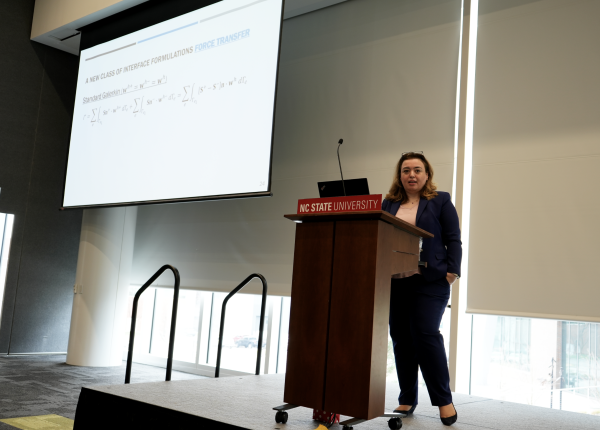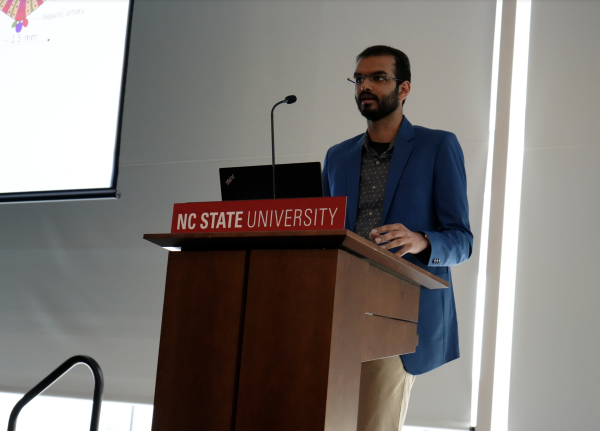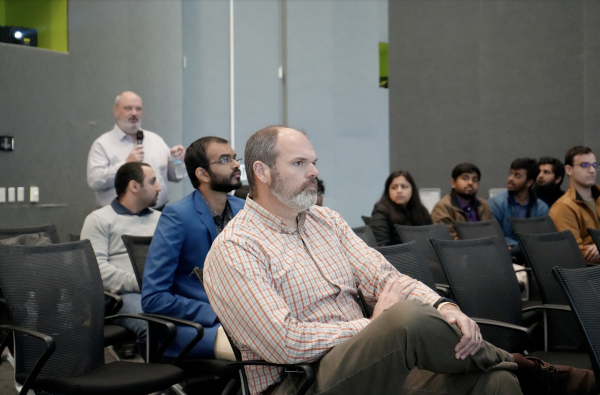
CCEE’s Structural Engineering and Mechanics (SEM) group held its 27th annual graduate research symposium on Friday, March 3 at NC State’s James B. Hunt Jr. Library. It was the first time in two years that the symposium was held in person.
“It was refreshing to be back in-person for this event and witness the myriad of interpersonal interactions and discussions that can take place,” said Assistant Professor Dr. Jason Patrick, who organized the symposium.
This year’s keynote speaker was Dr. Ghadir Haikal, a new associate professor in the SEM group, who discussed the challenges and applications associated with computational modeling of interfaces in complex infrastructure systems.

Graduate students presented their research in four technical sessions: Modern Modeling, Structuring with Composites, Bridging the Gap, and Materials for Tomorrow. Ph.D. student Lucas Maciel de Andrade Lima, advised by Dr. Tasnim Hassan, received the award of Best Overall Presentation for “Development of a High-temperature Creep Tester for Miniature Cladding Alloy Specimens.” He also received the Best in Session Presentation award in the “Materials for Tomorrow” session. The following graduate students also received Best in Session Presentation awards:
- Modern Modeling: Haritya Shah, an M.S. student advised by Dr. Murthy Guddati, for “Homogenized Properties of Hepatic Lobule”
- Structuring with Composites: Jack Turicek, a Ph.D. student advised by Dr. Jason Patrick, for “Synchronal Toughening and in situ Self-healing of Laminated Fiber-reinforced Polymer Composites”
- Bridging the Gap: Julio Samayoa, a Ph.D. student advised by Dr. Mervyn Kowalsky, for Performance of External Socket Connections for Accelerated Bridge Construction in Seismic Regions

The symposium included catered breaks and a lunch for the students and faculty to interact on a more personal level and discuss research amongst other diverse topics.
“This annual event is important to give graduate students a chance to share their research with others in the SEM group and foster research interactions/collaborations amongst students and faculty, help prepare students for presentations at scientific conferences and also their thesis/dissertation oral defenses,” Patrick said. “It also opens everyone’s eyes to research happening outside their respective laboratories to gain both breadth and depth in their own program.”

